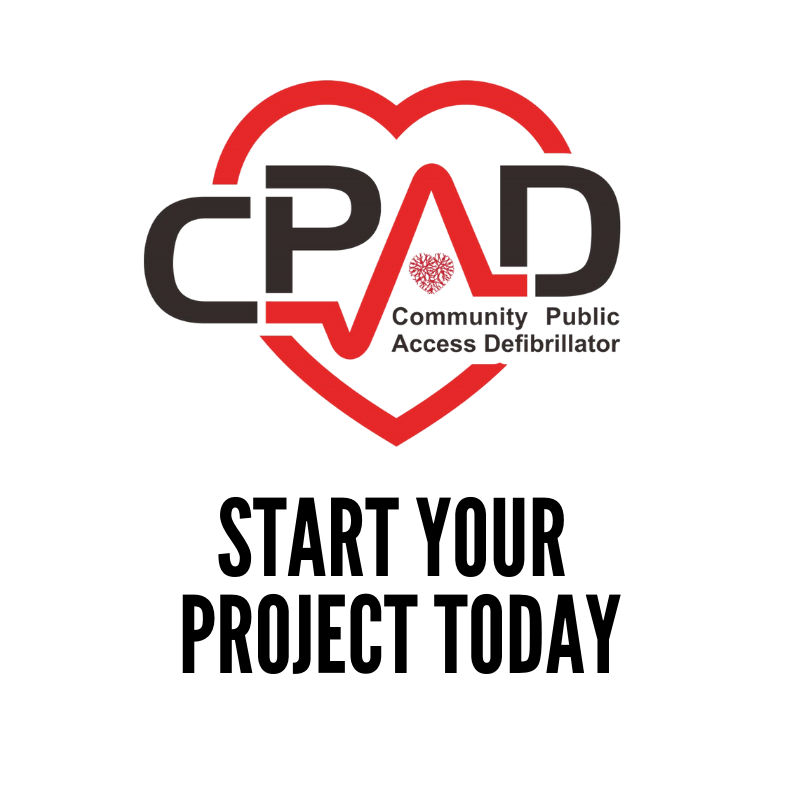WHERE TO BEGIN
"You don't have to be a fireman to use a fire extinguisher, you don't have to be a paramedic to use a defibrillator."

Choosing where to site a defibrillator is a good first step. Usually, it is best to identify areas with a high footfall and that allows relatively easy access to equipment should it be required in an emergency. For these reasons, it is not uncommon for Village Halls, Pubs, Shops and other centrally located venues to act as hosts for a community defibrillator. Feasibly any site that has a location to draw power from for the defibrillator cabinet, not the defibrillator as it is battery powered, is well lit and easily accessible could host a cPAD.
CHT can provide hosting agreements for those wishing to install a defibrillator, but whom do not own the premises which have been identified as the host site for the equipment.
A scheme pioneered by Community HeartBeat has also led to local Telephone boxes being a popular choice for communities to repurpose and provide a local defibrillator, as many are centrally located and still have access to power. If you are considering this option we have a whole section dedicated to Converting a Telephone Box for this purpose, as there are some specifications required in order to achieve this.
Regardless of the type of location a key thing to note, however, is that all Ambulance Services have an activation radius for community defibrillators ranging from 200 - 1600 metres depending on the area. In effect, this means that if a 999 call is made outside of this area, the unit may not show up on their systems, and thus the defib will not be activated in a rescue.

DEFIB, CABINET, EMERGENCY COMMUNICATIONS?
Supporting or purchasing a community defibrillator scheme is not just about the defibrillator and the cabinet. It is very easy for a public body to go down the route of seeking the cheapest combination of defibrillator and cabinet, without taking into account the differences between defibrillators - not all are suitable or ideal for community use - and similarly for the cabinets. For further information visit our section regarding Defibrillators.
In recent years several new makes of "defibrillator cabinet" have appeared on the market. Many of these are not made by specialist cabinet makers, do not comply with many of the rules, regulations and, guidelines issued, and are there to seek sales profit, rather than protect the defibrillator. The first step in assessing which equipment will be fit for purpose is to have an idea of where the unit may be located as above. For instance, IP65 Stainless Steel cabinets when going outdoors will weather for years to come but may not be necessary for an indoor location or Telephone Box in which Mild Steel Cabinets will weather with the added layer of protection in an enclosed kiosk. To see which cabinet may be suitable for you please refer to our Defibrillator Cabinets section.
As a standard with all cPAD sites, CHT provides an Awareness Session for the community, which is not limited to a certain number of people and serves as a way of removing the fear of using the locally provided equipment. Also to address the "lone-rescuer" situation and the Ambulance Service Activation Radius some sites may wish to adopt the Volunteer Emergency Telephone System.
If mobile reception is poor in the local area CHT now has permission from BT to install Emergency 999 Phones back into Telephone Boxes where telephony equipment may have been removed. Such devices can be installed anywhere however and are often sited next to the local cPAD, but can also be installed independently of one.

TO IMPLEMENT AND MAINTAIN
As a guide, complete cPAD projects range in cost from approximately £1400 - £2200 depending on the equipment chosen, either with or without VAT as appropriate and we will always strive to provide the best equipment for a project*, whilst working within the budget allocated.
- WebNos cPAD internet based Governance System
- Post Event Trauma Counseling
- AED Signage
- Rescuer Safety Kit (Hi-Vis Jacket and torch)
- Community Cardiac Arrest Response Seminar (For as many people as necessary)
- Fund-raising support for which further information is available here
- Project Banking Facilities
- Individual online project donation page
- Complete policies and procedure pack
- Post-event patient data downloading (Tier 1 defibrillators only*)

THE LAW & LIABILITY
The Social Action Responsibility And Heroism Act (SARAH) received its Royal assent in April 2015. Covering the area of protection for a lay rescuer in an emergency, this new law will aid the development of community defibrillation and give reassurance to members of the public wishing to act to help in an emergency. However, the placement of community defibrillators is not just about making sure all legal aspects are addressed in the actual rescue. You need the right equipment, the right governance, the right support and the right attitude. Buying "cheap" can mean buying twice.
The owner or responsible people for the defibrillator have a duty of care to bystanders to have the equipment properly maintained and rescue ready, Community Heartbeat assists communities with this by providing an easy to use checking system that keeps a history of the equipment and can be used to flag up any potential problems quickly, all done through WebnoS.
- Making sure all policies and procedures are in place. These include policies covering – Health and Safety; Duty of Care; recommissioning of the defibrillator; planning, listed building and conservation areas; training.
- Making sure the right equipment is used, and that this is managed in accordance with the manufacturer's recommendations and limits (eg temperature)
- Sharing data across all stakeholders, along with copies of policies and procedures.
- Initial installation records, electrical safety, ‘responsible person’, compliance and equipment manifest
- Weekly, Monthly, Annual checks in line with DoH and MHRA recommendations
- Instant reports to record usage of the defibrillator, reporting out of action and back in action details.
- Reporting to the Resuscitation Council on rescue details
- Training and maintenance of training records
- Equipment consumable resupply and/or replacements
- Statutory notifications, investigations and outcomes, and recording of these
- Coroner reports; ambulance service reports; stakeholder reports
- A full history and provenance of the equipment, its usage, changes to the configuration, battery and electrode replacement dates, and other required audit information.
- Any PLI; theft and damage insurances; and management insurances (assuming the clinical liability is addressed through TPLC)
The Ambulance Service has their own liability but this is only applicable to when they arrive on the scene to when they leave. CHT also provides public liability to schemes either independently or as part of it's managed solution.
WILL WE NEED TRAINING?

A QUALIFIED ELECTRICIAN

FROM PROCEEDING TO SITE LIVE
Whilst there is no accounting for how long the fund-raising or fund procurement stage may be, on confirmation of an order we aim to provide the equipment within 2 weeks time. Once the installation is complete, we will then register your site with your local ambulance service and get you registered onto WebNos. Confirmation from the Ambulance service that your site is now on their system may take a week or so, therefore realistically, completion of a project may take 3-6 weeks from ordering your equipment. If you are having training as well, documentation to book will be provided with the cPAD when it arrives but is generally booked a few weeks after delivery. Also if you are implementing a V.E.T.S scheme and are searching for volunteers this can be done whenever you are ready and does not necessarily have to be in place before your defibrillator is "live".

